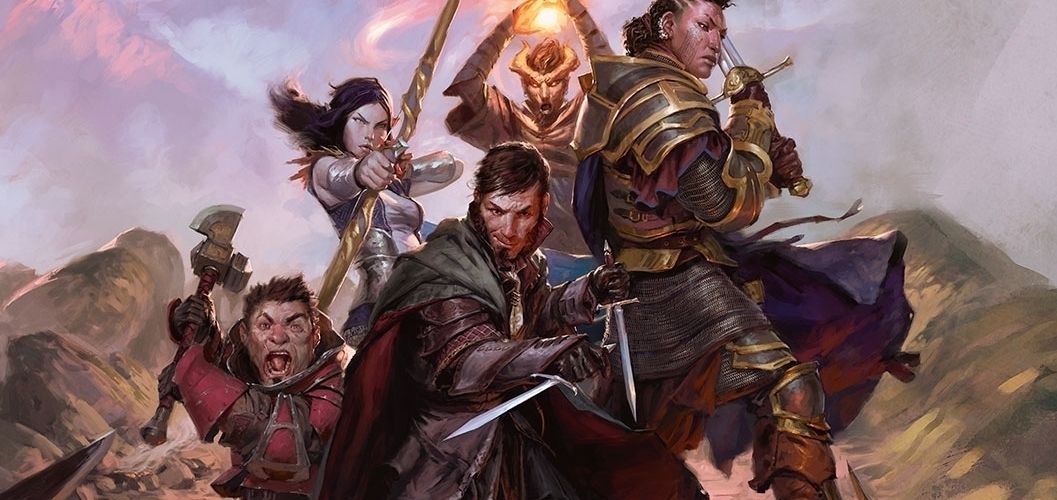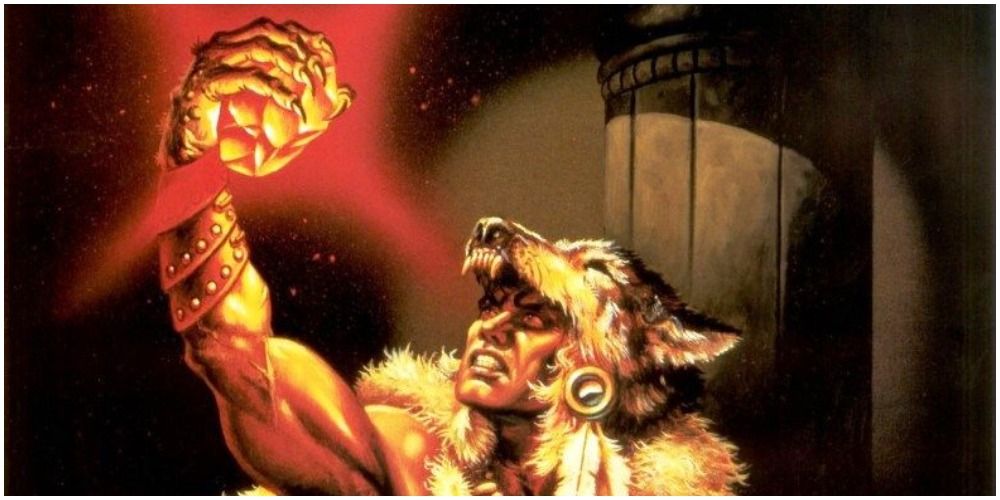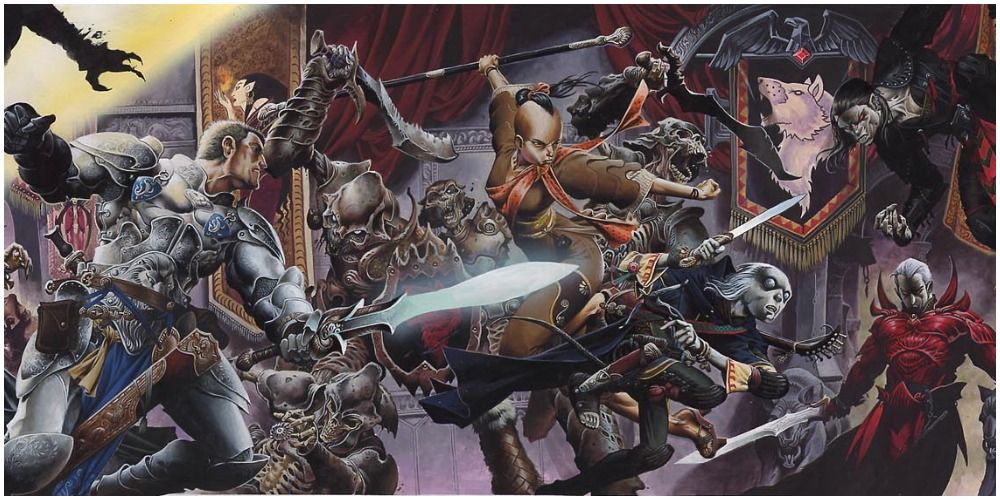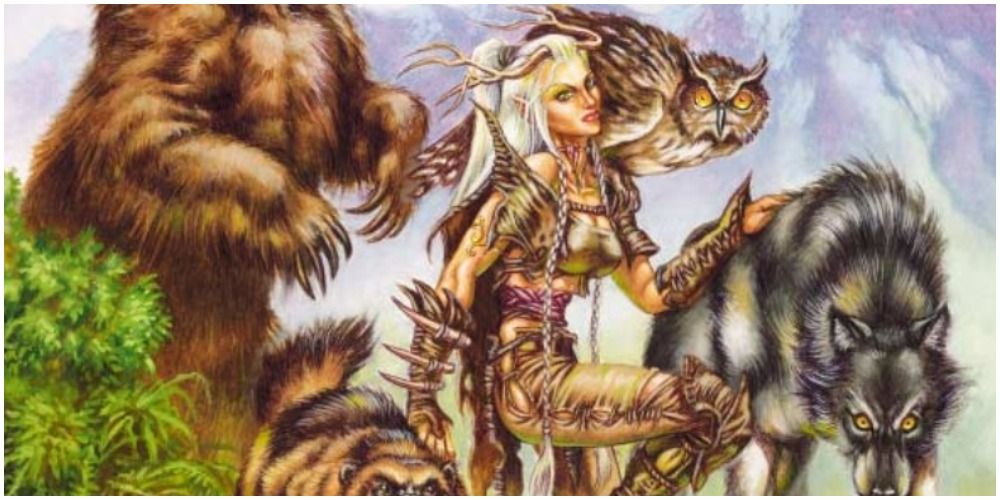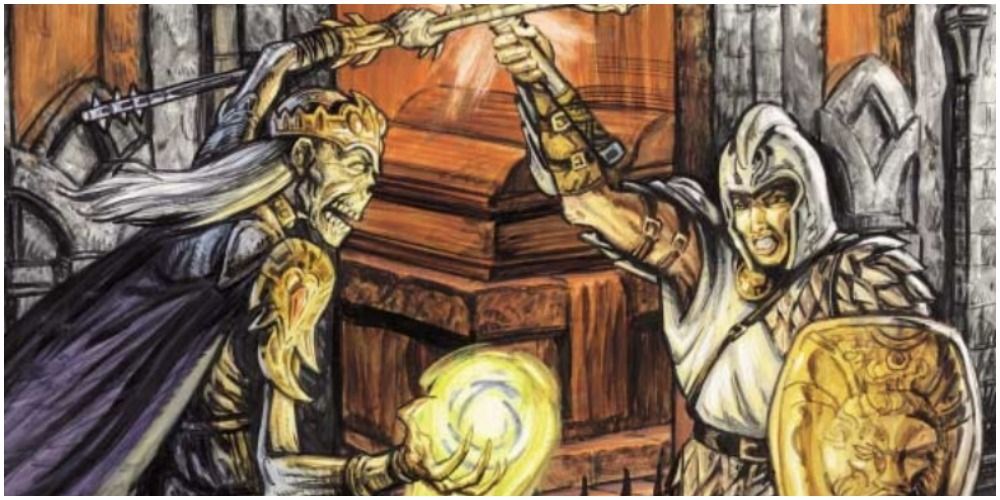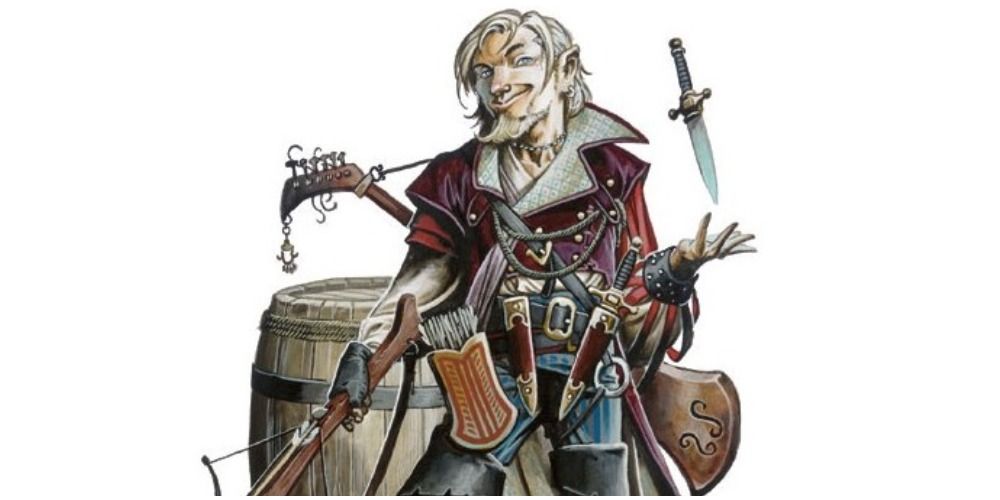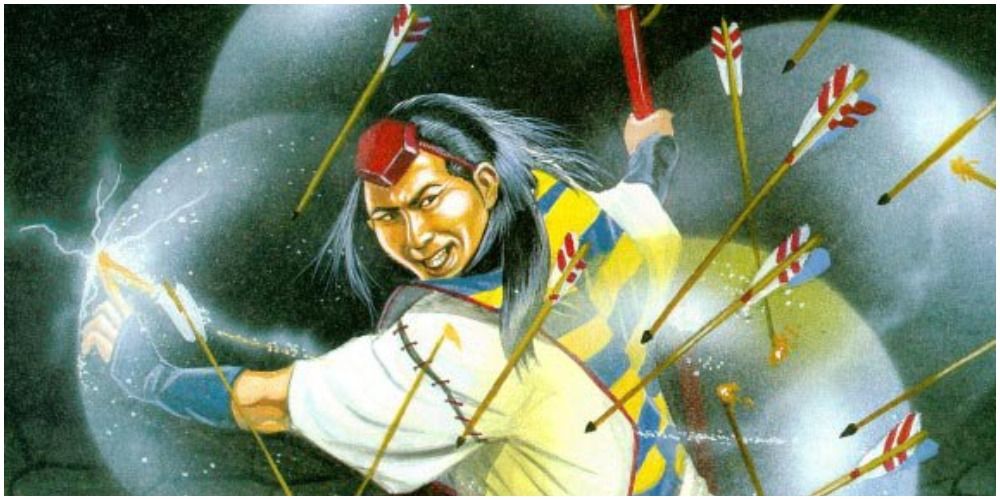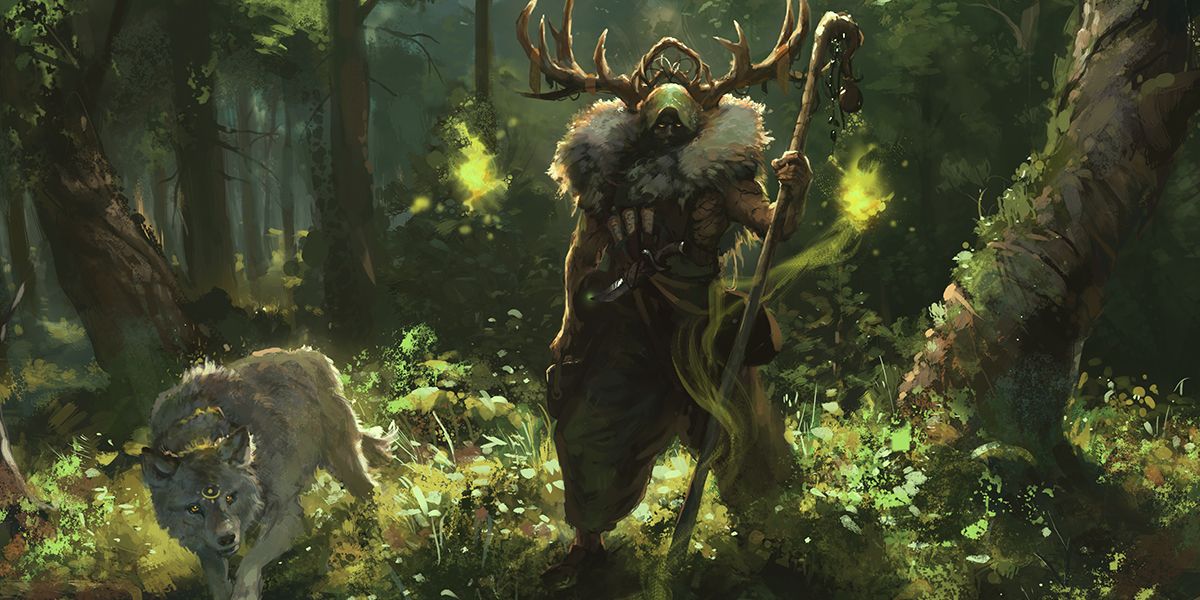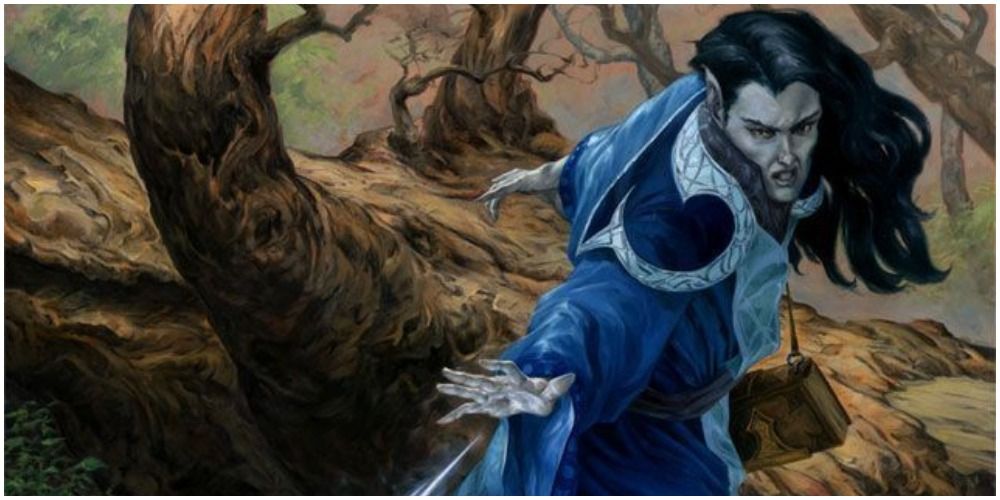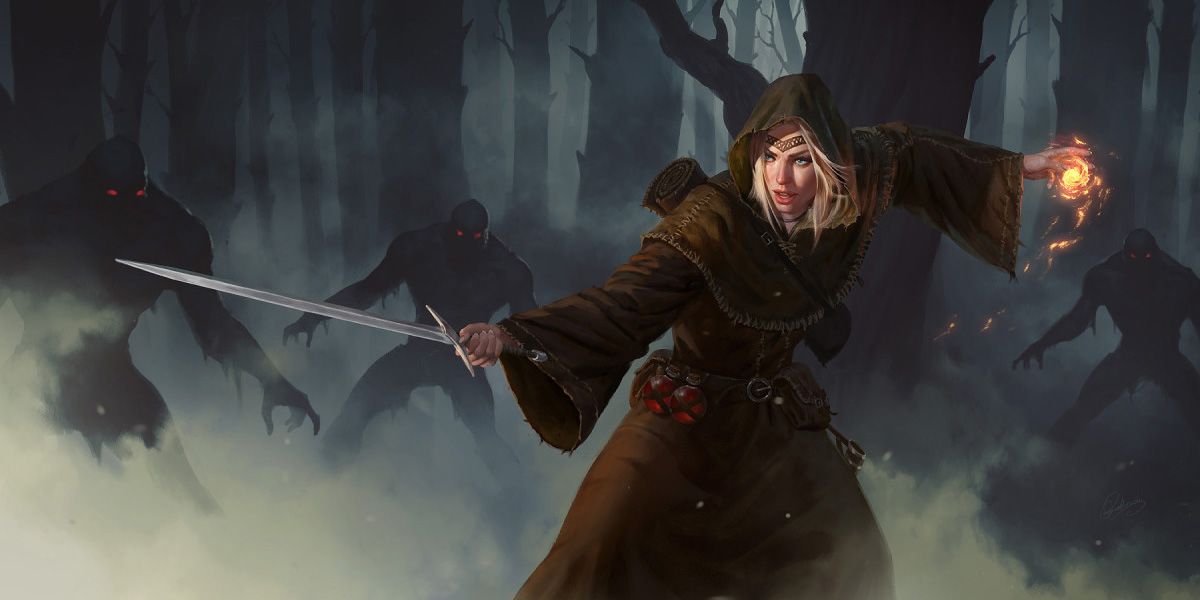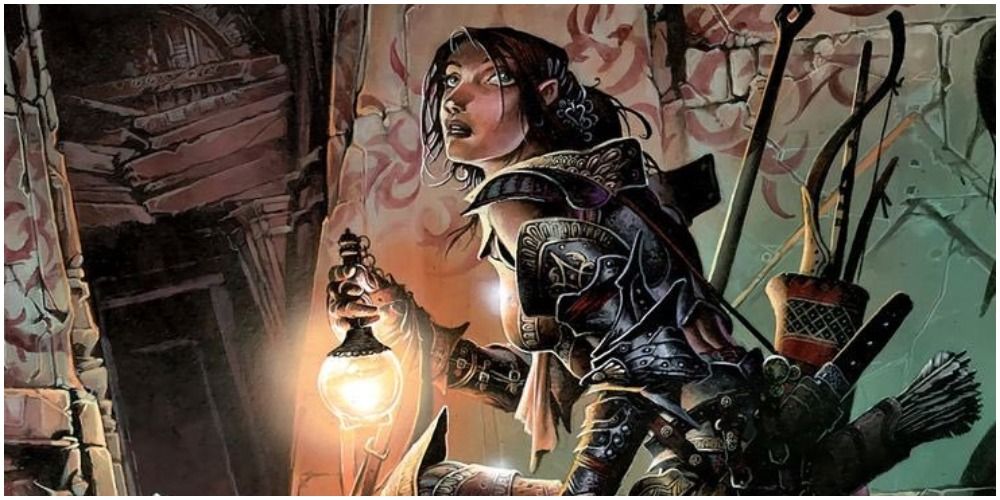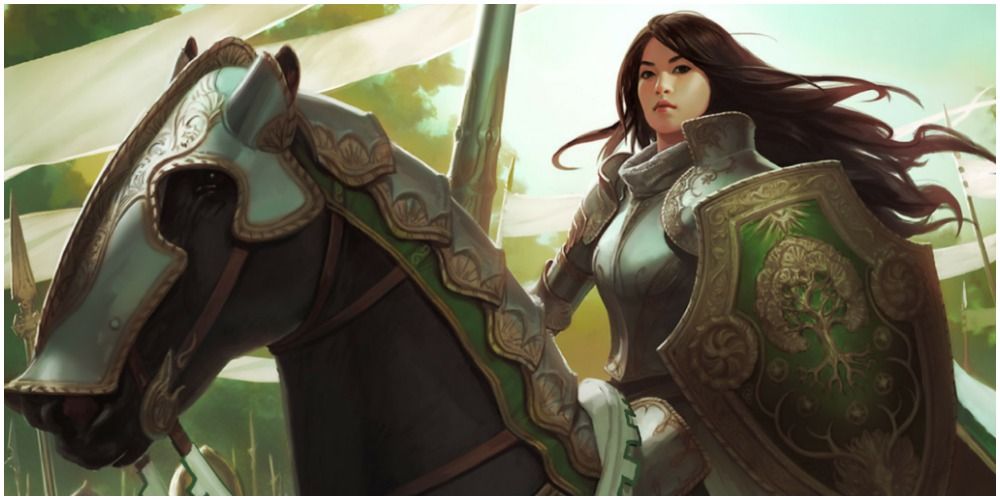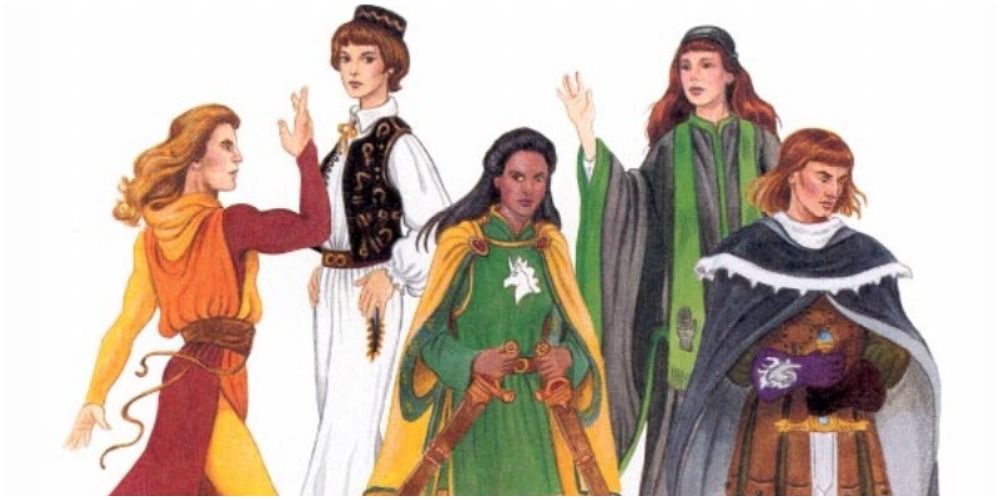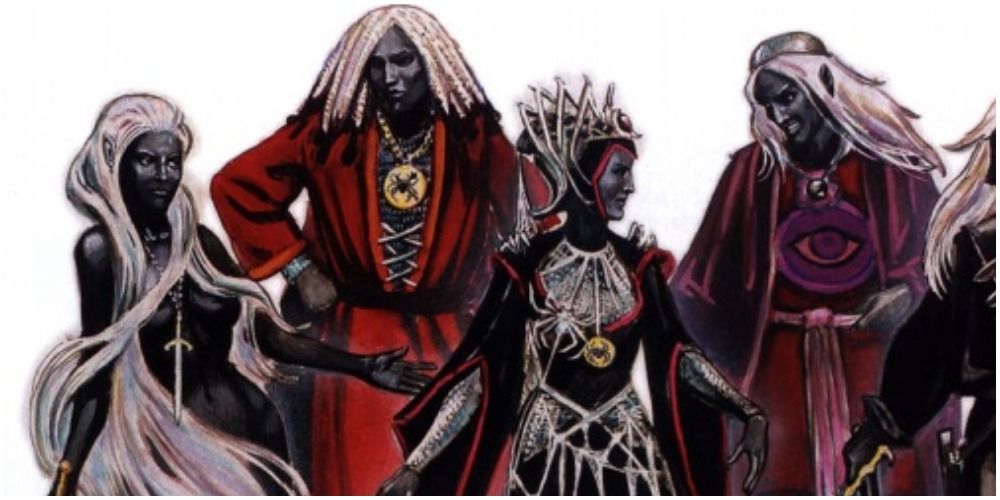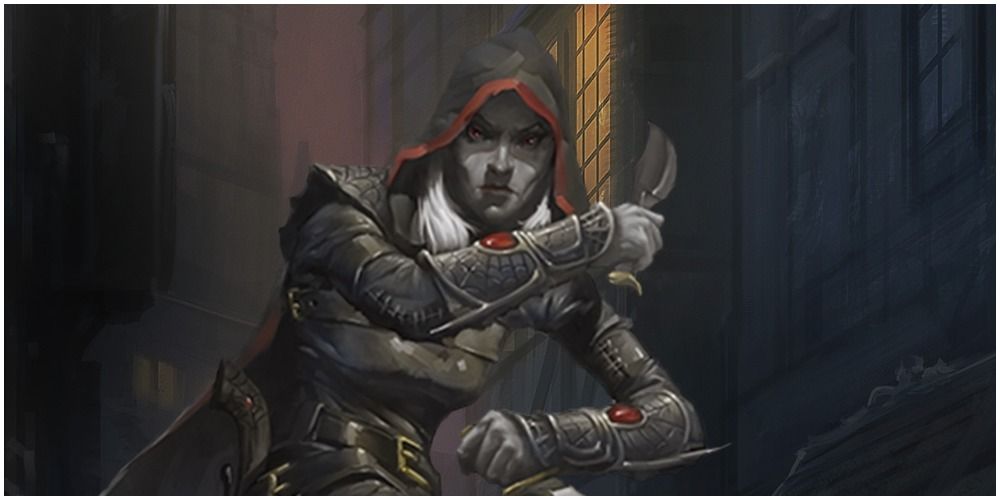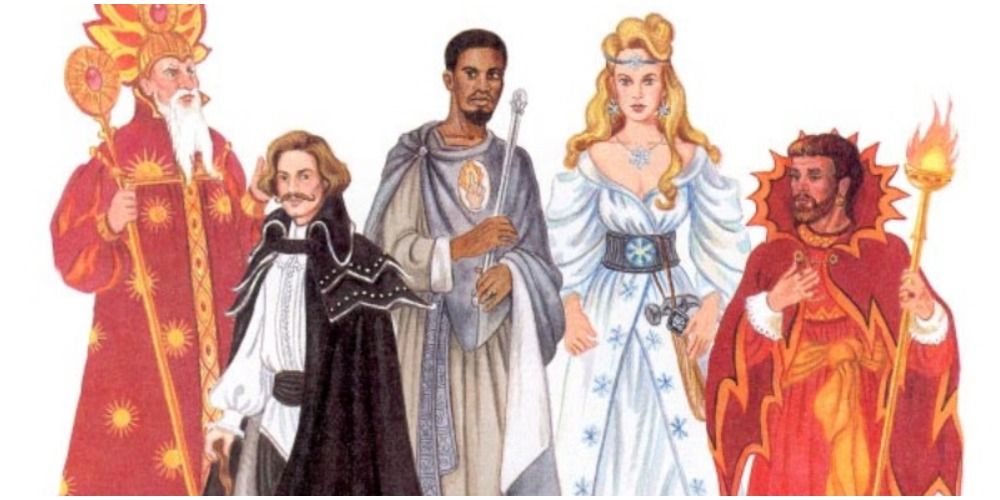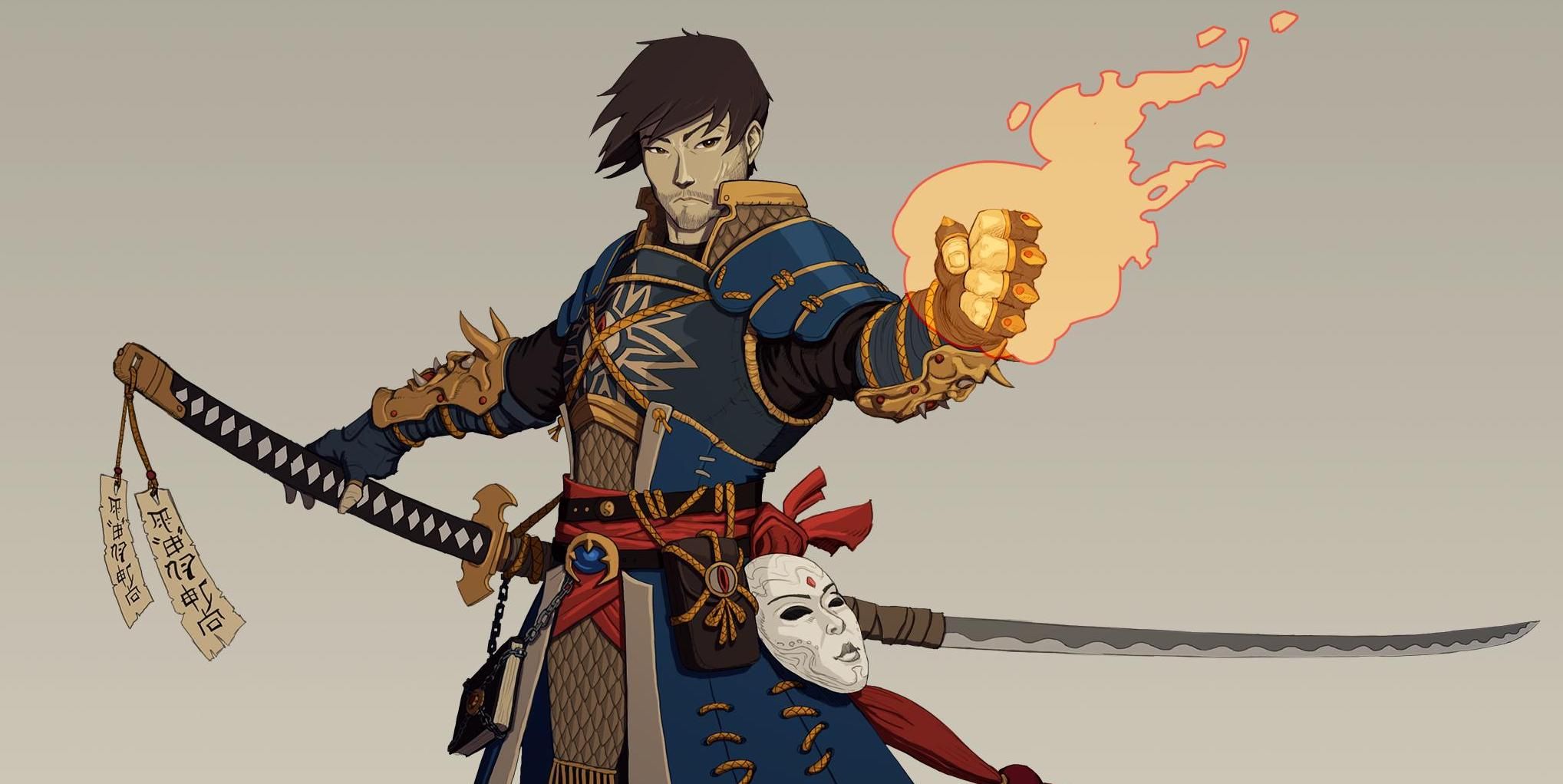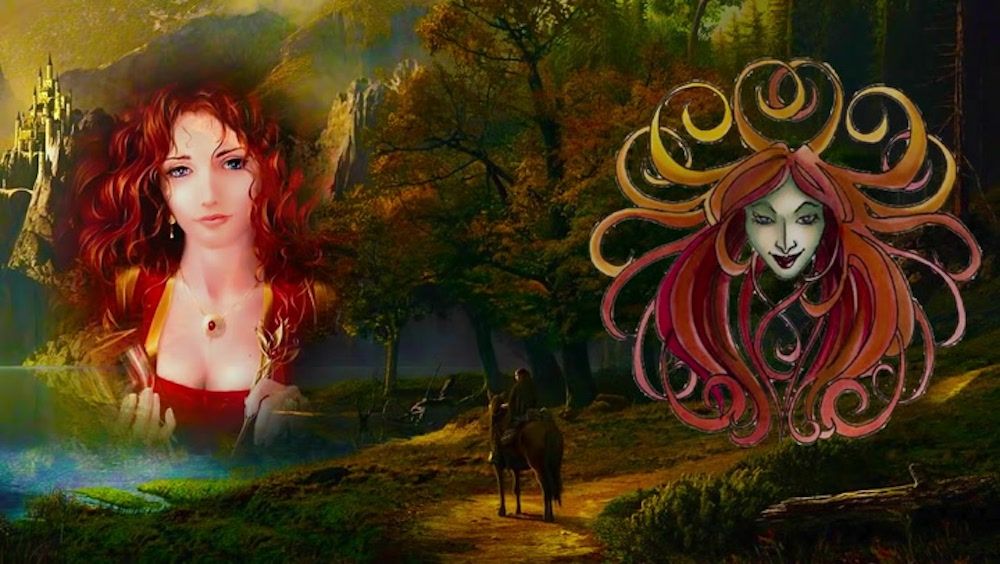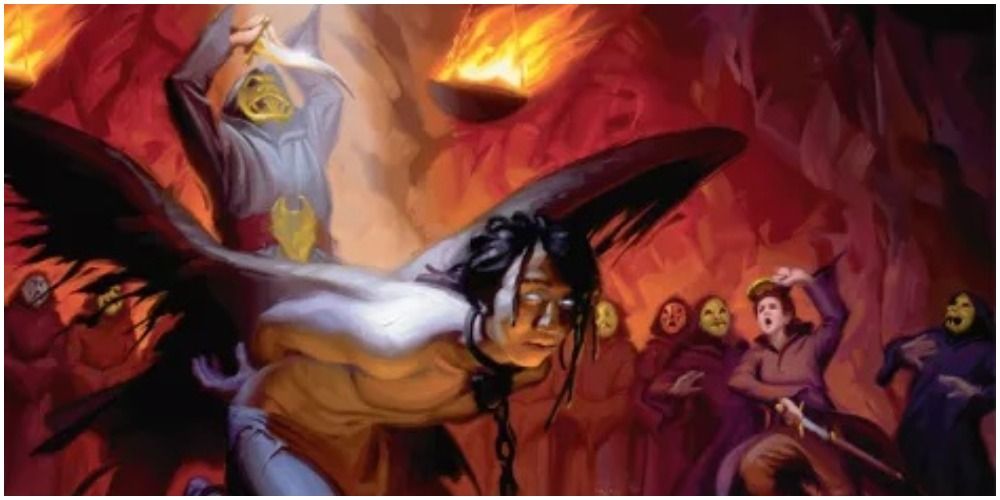The characters that you play as in Dungeons & Dragons are defined by a class, which is meant to be a representation of their abilities and will define how their skills develop as they become more experienced. Fans of Dungeons & Dragons were quick to determine which classes were more powerful than others, in the same way that the competitive fighting game community creates tier lists for all of the characters in each game.
The spellcasting classes (such as clerics and wizards) have always held the advantage over their nonmagical counterparts, due to the amazing power that spells can bring to the battlefield... or so everyone thinks. There are a lot of classes in Dungeons & Dragons that are so incredible that they were considered to be "broken" by the fans, which led to an outcry towards the creators of the game and resulted in said classes being weakened when a new edition of the game was released.
We are here today to discover which Dungeons & Dragons classes were nerfed in the transition between editions - from the barbarian that stopped gaining power from tearing magic scrolls apart to the evilest spell in the game losing its sting.
Here are the 20 Ways Dungeons & Dragons Completely Broke Powerful Classes!
Barbarians Stopped Gaining Experience Points From Breaking Magic Items
The barbarian class debuted in Unearthed Arcana from the original edition of Dungeons & Dragons, where they received some of the best combat bonuses and special skills in the game, as well as the ability to gain experience points whenever they destroyed a magical item.
The barbarian returned as a kit in The Complete Fighter's Handbook from Advanced Dungeons & Dragons, where their entire skill set revolved a +3 bonus or -3 penalty to reaction rolls and lacked any kind of unique combat abilities. The Complete Barbarian's Handbook offered a slightly better version of the class, with better hit dice and some impressive two-weapon fighting skills, but it still didn't match up to the original version of the class.
Fighters & Rangers Stopped Receiving Free Soldiers
The melee warriors of Advanced Dungeons & Dragons would eventually be outstripped in power by the spellcasters in the party, due to how magic became stronger at a faster rate than their combat abilities. One major advantage that fighters and rangers had came in the form of free followers that they could use for battle or to earn money for them on the side. A fighter officially becomes a Lord when they reach level nine and starts to attract soldiers, while a ranger would attract 2d6 followers when they reached level ten.
The followers attracted by fighters and rangers often possessed class levels, magic items, or belonged to special races. The warrior classes lost their free followers in the third edition of Dungeons & Dragons and could only use the optional Leadership feat to attract allies, which was tied to the Charisma score and was usually only used by paladins.
Druids Could No Longer Rely On Animal Companions To Fight For Them
Druids may have been the best class in the third edition of Dungeons & Dragons, due to how they received full spellcasting capabilities, combat skills, and received new special abilities almost every level.
The animal friendship spell allowed third edition druids to have animal companions whose hit dice were equal to twice their caster level (or the same if they moved around a lot), which meant that druids could easily attract powerful animals or hordes of weaker ones to swarm the enemy, where they essentially acted as party members that didn't absorb experience points. The animal companion ability was nerfed in the jump to 3.5, where druids could only have a single animal companion that became stronger as the druid gained levels.
There Are More Risks Associated With Casting Wish
Wish has always been the most powerful spell that the players will have access to, as it allows them to ask for anything in the world, even though there is a risk associated with its casting. The wish spell was ripe for abuse by high-level parties for years, as players found ever more ingenious ways to demand favors from the cosmos.
The current edition of Dungeons & Dragons has taken some of the power away from high-level spellcasters with access to wish, as there is now a 33% chance of never being able to cast wish again every time you use it. Even if you pass the 33% check, your character will still have their Strength score reduced to 3 for 2d4 days, leaving them totally helpless.
The Glibness Spell Was Nerfed In Order To Stop Bards From Taking Over The World
Bards might have seemed like one of the least-effective classes in the third edition of Dungeons & Dragons, but they had exclusive access to one of the best spells in the game - glibness. The glibness spell could be cast by level ten bards and it gave them a +30 bonus to Bluff checks, which meant that bards could lie their way out of any situation and could cover for the party's actions with ease.
The glibness spell has returned in the current edition of Dungeons & Dragons but it is much weaker and cannot be used until the bard hits level fifteen, at which point they will likely have easier ways of controlling the minds of their foes.
Wu Jen Lost Their Signature Damage-Dealing Ability
The addition of Metamagic feats to the third edition of Dungeons & Dragons allowed spellcasters to change the power of spells, but this ability was once the purvey of a single class - the wu jen. Wu jen were oriental wizards that hailed from the same societies as samurai and they had to live by specific taboos in order to maintain their power, such as not being able to eat meat or not being able to bathe.
In exchange for their quirkiness, a fourth level wu jen could cast a low-level spell at maximum damage, with the level of the spell increasing as they leveled up. The wu jen that appeared as a class in the third edition of Dungeons & Dragons could alter their spells using Metamagic feats without altering their level, but it was the lame ones like Silent Spell and Still Spell and didn't affect the damage of the spell.
Natural Spell Is No Longer A Staple Druid Feat
In the third edition of Dungeons & Dragons, a character would receive a free feat at level five. If you were playing as a druid, then that feat was practically chosen for you in the form of Natural Spell. The Natural Spell feat allowed druids to cast spells while using the Wild Shape ability, where they can transform into an animal or elemental. Natural Spell was easily the best druid feat in the game and every druid took it as soon as they hit level five and gained Wild Shape.
Natural Spell was replaced with the Beast Spells ability in the current edition of Dungeons & Dragons, where you didn't receive it until level eighteen, meaning that most players would never be able to use it.
The Original Monk Class Was Turned Into A Terrible Cleric
The allure of finding a magical sword has prompted many an adventurer to risk their lives in battle, but there are some warriors who prefer to punch monsters right in their stupid face, rather than relying on steel. The monk class has existed since the original edition of Dungeons & Dragons, where they could hit like a truck and became immune to almost every status effect in the game.
The monk also had access to the fabled "quivering palm" technique, which allowed them to act like Kenshiro from Fist of the North Star and slay their opponent with a touch. The monk class was reduced to becoming a kit in The Complete Priest's Handbook, where they gained some extra weapon proficiencies, in exchange for losing the ability to wear armor or being able to own anything they couldn't carry.
The Third Edition Sorcerers & Wizards Lost Some Of Their Best Spells
The haste and polymorph spells have always been troublesome, due to the amazing combat buffs offered by the former and the incredible utility of the latter. The original versions of haste and polymorph that appeared in the third edition of Dungeons & Dragons were so broken that they had to be nerfed via errata and were almost totally changed in the jump to 3.5.
The arcane spellcasters also lost access to the mass haste spell in 3.5, as it was deemed to be too powerful and was cut from the game. If a sorcerer or wizard wanted to buff an entire party with the haste spell, they would have to burn off most of their precious third-level spell slots.
Bladesingers Were (Rightly) Nerfed.
Elves are said to be more magically attuned than the other races and the bladesinger kit from Advanced Dungeons & Dragons was meant to be proof of their natural skill with the arcane arts. Bladesingers gained amazing bonuses when using their weapon of choice, had an easier time performing special maneuvers in combat, and could cast spells while still holding a weapon.
The bladesinger kit was essentially the ultimate fighter and mage combo and many fans considered it broken when it was first revealed. The changes to the rules regarding casting spells in armor made the bladesinger redundant in third edition, though a mediocre bladesinger prestige class did appear in Complete Warrior.
Paladins Lost The Best Level One Ability In The Game
Paladins were once forced to take the lawful good alignment and had to uphold the loftiest of values in order to maintain access to their holy powers. The struggle of playing a paladin the third edition of Dungeons & Dragons was worth it due to their Divine Grace ability, which they received at level one (or level two in 3.5) and allowed them to add their Charisma modifier to their saves.
A Paladin with a high Charisma score was almost impossible to hit with spells and special attacks, due to how high their boosted saving throws were. Paladin's lost their Divine Grace ability in the fourth and fifth editions of Dungeons & Dragons, although this was offset by looser alignment restrictions in the current edition of the game.
The Amazing Cavaliers Were Reduced To Relying On Horses
The Cavalier class from the original edition of Dungeons & Dragons and the Cavalier kit from The Complete Fighter's Handbook were some of the best classes in their respective editions, due to the amazing combat benefits they received that were offset by similar behavior standards that are enforced on paladins.
Cavaliers always had to fight the nastiest looking monster in each encounter, but that's only an issue if the dungeon master is out to mess with you. The Cavalier prestige class in the third edition of Dungeons & Dragons would have been impressive if you could start taking levels in it earlier, but the fact that you can't receive its benefits until a minimum of level nine means that their powers aren't as scary compared to what other classes of the same level are capable of.
Bards Went From Being The Ultimate Class Into A Joke
The third edition of Dungeons & Dragons introduced the concept of prestige classes, which were advanced classes that had to be unlocked after completing several adventures. The version of bards that appeared in the original edition of Dungeons & Dragons were the original prestige class, as you had to take levels in fighter, thief, and druid in order to become one. The journey to becoming a bard was worth it, as their ability to charm opponents through song, coupled with their obscenely high hit dice and hit point pool made them one of the best classes in the game.
Bards became a standard class in Advanced Dungeons & Dragons and were considered to be one of the worst classes in the game, due to how they were a jack of all trades character that was easily outstripped by a character that chose to specialize in one field.
Clerics Of Oghma Lost Their Amazing Spell-Singing Ability
The ability to use magic through singing is a popular one from folklore and mythology, which is why it often crops up in Dungeons & Dragons. The Warriors and Priests of the Realms sourcebook for Advanced Dungeons & Dragons had the holy singer kit for clerics of Oghma, which allowed them to sing their spells.
Holy singers gained several benefits, but the best was their ability to cast any spell without requiring somatic components, so long as it was sung, which increased the speed factor slightly. The fact that holy singers could sing while bound meant that a lot of common anti-spellcaster tactics didn't work on them. Clerics of Ogmha never received a powerful prestige class in the third edition of Dungeons & Dragons and could no longer sing their way out of trouble.
The Sword Dancers Of Eilistraee Lost Their Free Wizard Spells
Eilistraee is the only good god among the drow pantheon, as her worshipers have rejected the Underdark in favor of living on the surface and dancing under the moonlight. The sword dancers of Eilistraee were specialty priests with a limited ability to cast specific wizard spells like enchanted weapon, magic missile, and spell turning, as well as having unique access to two powerful cleric spells - eilistraee's moonfire and blade dance.
The clerics of Eilistraee gained a prestige class called the sword dancer in third edition, but their ability to cast their domain spells spontaneously was lackluster compared to the benefits they received in the previous edition.
Assassin's Lost Their 50% Chance Of Slaying Attack
The original version of the assassin from the first edition Player's Handbook had one of the most broken abilities in the game, as they had a roughly 50% chance of instantly slaying an opponent if they managed to surprise them and hit them with a backstab. Assassins returned in The Complete Thief's Handbook, but they lost their incredible backstab and became focused on using poison in battle.
Assassins became a prestige class in the third edition of Dungeons & Dragons and they did have the ability to instantly slay an opponent, but they had to observe them uninterrupted for three rounds, which made it far less useful in a fight.
The Magefriends Of Azuth Lost Their Wizard Spells
Azuth is the god of mages and spellcasters, who often works in tandem with Mystra, the goddess of magic. The Warriors and Priests of the Realms sourcebook for Advanced Dungeons & Dragons had a kit for clerics of Azuth called the magefriend, which gained the ability to cast wizard spells alongside their cleric spells, but these spells only progressed at half of the cleric's level.
Magefriends couldn't wear armor and couldn't turn zombies, but the fact that they also received wizard spells from their god through prayer made them stronger than most multiclassed cleric/mages. Clerics of Azuth gained access to the powerful Halruaan magehound prestige class in the third edition of Dungeons & Dragons, but it had a lot of entry requirements that prevented anyone under level eight from joining and was limited to characters who hailed from one specific region.
The Samurai Became Standard Units
The fact that most Dungeons & Dragons campaigns are based in fantasy settings inspired by medieval Europe hasn't stopped samurai and ninjas from showing up and becoming playable classes. A samurai kit for fighters was available in The Complete Fighter's Handbook and it was one of the best classes in Advanced Dungeons & Dragons, due to how they are given a katana (one of the best nonmagical weapons in the game) for free and could increase their Strength score to 18/00 a number of times per day equal to their level.
The third edition version of the samurai that appeared in Complete Warrior was a joke by comparison and is often regarded as one of the worst classes in the game. The samurai class is derided for how poor their unique skills are and how their abilities are just pre-selected feats, which is inferior to the selection on offer to the regular fighter.
Aesthetes Of Sune Lost Their Amazing Healing Powers
Sune is the goddess of beauty and love from the Forgotten Realms campaign setting and her followers are equally consumed with the protection of those that they find attractive and bringing joy to the life of the needy. The Warriors and Priests of the Realms sourcebook for Advanced Dungeons & Dragons had rules for the aesthete kit that gave clerics of Sune the ability to cast regenerate once per week when they reached level five.
Regenerate is one of the most powerful spells in the game and usually cannot be cast until level fourteen. The clerics of Sune lost this power in the third edition of Dungeons & Dungeons and were left with the heartwarder prestige class, which was nowhere near as powerful as the aesthete kit.
Evil Clerics Lost The Might Of The Harm Spell
One of the best spells for good-aligned clerics has always been heal, which restores all damage that has been dealt to a single character. The reverse of the heal spell is harm and the third edition version of the spell was incredibly broken and turned clerics into one of the most feared classes in the game.
The third edition version of harm would leave a creature with only 1d4 hit points, regardless of what the number was before the spell was cast. Harm did not allow for any kind of saving throw, but it could be nullified by spell resistance. If you cast harm on an elder gold dragon, you could reduce its hit point total from seven hundred and seventeen to one in a single spell. The jump to 3.5 totally nerfed harm so that it only dealt ten points of damage per cleric level and couldn't reduce a creature below one hit point. The 3.5 version of harm also allowed a Will saving throw for half damage.
---
Are there any other ways that Dungeons & Dragons broke powerful classes? Sound off in the comments!

